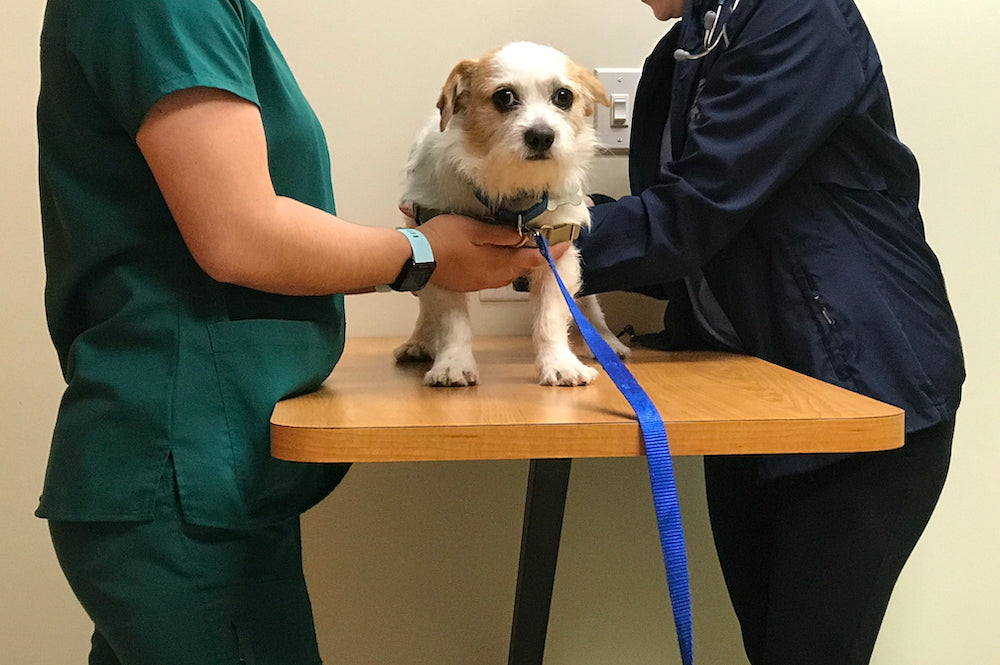AFTERPAY NOW AVAILABLE | CHRISTMAS SALES 30% OFF STORE WIDE - CODE "XMAS30"
AFTERPAY NOW AVAILABLE | CHRISTMAS SALES 30% OFF STORE WIDE - CODE "XMAS30"

When dogs bark or do anything destructive in the house, it’s quite easy to say that they’re just being naughty. But, in reality, a dog’s mind and emotions are as complex as human beings—something you can’t just sort between bad and good.
One of the many things they also experience is anxiety. Oftentimes, dogs manifest it in varying ways. Some may become aggressive, restless, or depressed. But, no matter what symptoms or behaviours they show, anxiety is something that we don’t want our furry buddies to experience.
Unfortunately, out of the 5 million dogs in Australia, at least 40% experience anxiety. Thus, it’s not very uncommon. Who knows, your dogs might already have it. But what exactly causes anxiety in dogs?
Although there's no definitive answer to why some dogs experience anxiety while others don’t, various researches show that mostly it’s got something to do with our relationship and connection with our dogs.
Suffering from traumatic events and neglecting their needs, like walking and taking time for play, cause 41 to 59 percent of dogs to have physical and mental health problems, including the following common forms of anxiety:
In other words, we have an integral role in keeping our dogs free from anxiety. Hence, it’s best to familiarise ourselves with the following practical methods to reduce dog anxiety.
Systematic desensitisation was created in the 1960s and 1970s and has been found to be effective in reducing anxiety since then. In this training strategy, gently and repeatedly expose your dog to the mild version of the identified cause of their anxiety at increasing intensity. This will help your pup gradually get used to the trigger without feeling anxious or uncomfortable.
For instance, if your dog is diagnosed with separation-related anxiety wherein the trigger is the owner’s departure or absence, leave the dog alone for a short period and praise it every time you re-enter the room. Gradually increase the separation time until the ideal result is achieved.
Another treatment that goes well with systematic desensitisation is counterconditioning your dog’s response to anxiety-inducing stimuli. This is done by changing the bad or destructive behaviour associated with it into something pleasurable, like sitting, eating treats, or chewing toys.
A study by Rogerson (1997) shows that combining counterconditioning with systematic desensitisation has been 100% successful in treating the fears and phobias of 91 dogs.
Although considered the last resort due to side effects and cost, medications are also proven effective in reducing dog anxiety. But, its intake must be religiously paired with behavioural interventions to amplify its efficacy. Some of the common medicinal treatments are the following:
Fluoxetine has been recorded to reduce separation anxiety but has also been noted to cause lethargy and loss of appetite. There’s also the chance that your dog will refuse to take it in.
Administration of clomipramine notably improves separation anxiety and reduces anxious behaviours like restlessness and barking. But, studies have also shown side effects of the said medicine, like canine pancreatitis, abdominal pain, and lethargy.
A study comparing the effects of dog-appeasing pheromone on 67 dogs with anxiety compared to clomipramine showed no significant difference in efficacy. Although the pheromone was more convenient to administer, it also caused a few undesirable events.
Just like us, dogs also require mental exercises for their overall well-being.
Unfortunately, it's often overlooked as much attention is given to physical activities. One of the best ways to encourage your dog to think and reduce chances of anxiety is to dedicate time to obedience training.
This will help them develop concentration and control and distract them from their fears. You could also provide them with mentally-stimulating items, like puzzle feeders.
Sometimes our dogs' destructive behaviours (e.g. barking, chewing, urinating and defecating in inappropriate places) get the better of us. Consequently, we give in to anger and punish our dogs. But we have to understand that our dogs are also having a hard time processing their emotions. Hence, punishing them would only be detrimental.
Alternatively, if your dogs calm down and start to listen to you despite an anxiety attack, reward them.
If you don’t know how positive reinforcement works, seek a professional dog trainer’s help and provide your dog with the necessary gear, like harnesses, collars, and leashes.
If you’ve already exhausted all these methods and still nothing has changed in your dog’s condition, it’s best to consult your veterinarian. They could identify the type of anxiety your dog is experiencing and other ailments that possibly hinder your progress at lowering their anxiety levels.
Together, you could create an effective intervention plan that would best resolve your dog’s anxiety. After all, treatments have varying effects on dogs. What may work on another may be detrimental to your dog.
Unlike humans, our dogs are unable to express themselves fully. Hence, it’s our duty as owners to be more sensitive to their needs or feelings, like being anxious. These practical methods are already reactions to existing anxiety that could have been prevented if we’ve only paid enough attention to our dog’s physical and emotional needs. Remember, prevention is always better than cure.